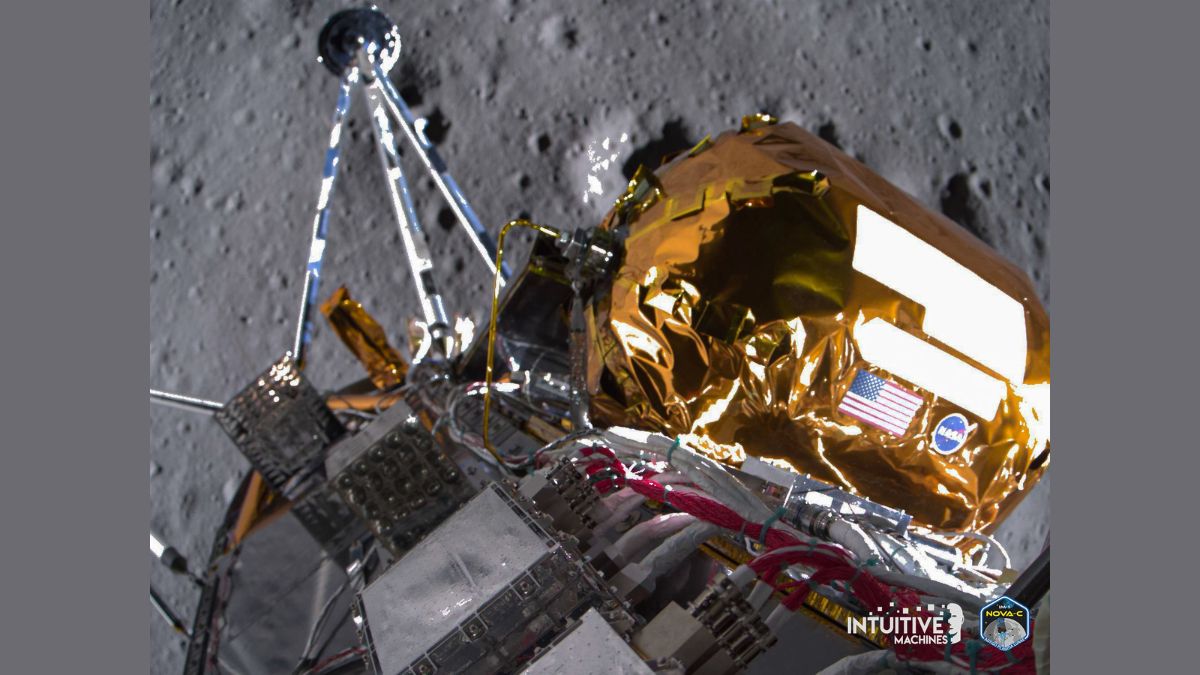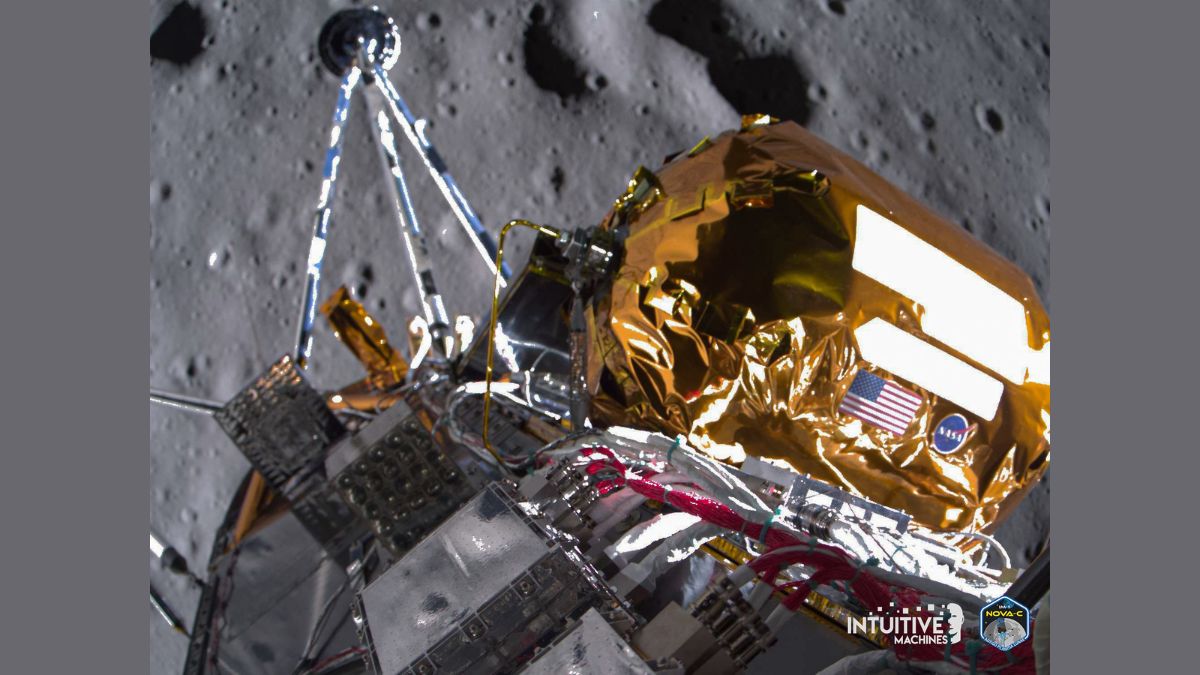Odysseus, the Moon lander that made history by landing the farthest south any spacecraft has been on the lunar surface, is set to bid adieu to the world on February 28, 2024. Before the mission ends, Odysseus sent its final close-ups of the Moon’s south pole. The images are the closest observations ever made of the lunar south pole by any spacecraft, according to Texas-based aerospace firm Intuitive Machines, which manufactured Odysseus.
The lander’s main engine has hugely throttled down, yet Odysseus captured stunning selfies of the Moon, about 30 metres above the lunar surface.
Here are some spectacular images of the Moon’s south pole captured by Odysseus.
ALSO READ | Gaganyaan: Meet The Four Astronaut Designates Chosen To Fly On India’s First Manned Space Voyage
Why is the Odysseus mission ending prematurely?
Odysseus landed near the Malapert A crater on the Moon’s south pole on February 23, 2024. The mission, called Intuitive Machines 1 Mission (IM-1), is expected to end about five days since landing because an in-flight error of Odysseus’s laser-guided range finders occurred ahead of lunar landing, causing flight controllers to implement a solution that resulted in the spacecraft tipping over, and landing sideways on the Moon. As a result, communication with Odysseus is likely to be severed. There is also a possibility that the lander’s payloads will no longer be exposed to sunlight.
Had Odysseus not landed sideways due to human error and pre-launch testing shortcuts that resulted in an in-flight failure of the lander’s laser-guided range finders ahead of lunar descent, the spacecraft would have operated on the Moon for about 14 Earth days in the presence of sunlight.
The Moon takes about 28 Earth days to rotate on its axis, which is why the gap between a lunar sunrise and the subsequent lunar sunset is about 14 Earth days.
According to a Reuters report, Mike Hansen, head of navigation systems for Intuitive Machines, said that the in-flight failure of the laser-guided range finders occurred because the firm decided to cancel a pre-launch test-firing of the laser system to save time and money during pre-flight checks.
Intuitive Machines revealed on the day of Odysseus’s Moon landing that the laser range finders, whose job was to provide extremely precise velocity and range (distance to the lunar surface) during lunar descent, were inoperable because mission teams did not unlock the laser range finders’ safety switch ahead of Odysseus’s launch on February 15. The safety lock could only have been disabled manually, a Guardian report said.
Ground control teams detected this anomaly a few hours before touchdown, as a result of which they had to use an improvised navigational solution to avoid a crash landing. The solution involved employing an experimental NASA-supplied system on the lander.
However, according to Hansen, the firm is yet to figure out if this solution was why Odysseus made a sideways landing.
The objectives of Odysseus include exhibiting communication and navigation mode capabilities, studying interactions between the lunar surface and plumes, performing radio astronomy experiments, and understanding how the lunar surface interacts with space weather.
Whether Odysseus will be able to accomplish all its goals is not known because the mission life remains uncertain.
However, it is likely that Odysseus has already collected a large amount of data which scientists can analyse even after the mission ends to obtain interesting information.

